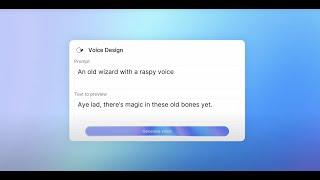
Why do Ex-British Colonies use Dollars Instead of Pounds? (Short Animated Documentary)
Комментарии:

🤔
Ответить
Dear mister prime minister;
You oge brah? Because these are my streets brotha and I don’t expect to see your skimpy shorts in Sydney, or else your head is gonna be Dutched and put in a sanga.
- Sydney Opera House

Dollar is just a name,nothing to do with us dollars,might just as well call them cabbages
Ответить
Because the British Empire was subsumed by the American Empire.
Ответить
It's incredible that the dollar was popular because it's a decimal system
Almost like a metric system for money lol

The fourteenth of February, nineteen sixty six!
Ответить
Australian money is pretty.
Ответить
We were just littered along the coastline as a global conveyer belt to get the pig her tea leaves. They wonder why their country has cancer.
Ответить
As an Australian we got funds from James bissonette
Ответить
The natural follow-up question is: Why would Egypt, a country really far away from Britain, still keep the pound with no homogenity with the surrounding area?
Ответить
The answer being tap-danced around is USA USA USA and the decimal system that made the math so much easier in the pre-computer age.
Ответить
Well it’s still not really telling me why they went for the name “dollar” right ? Like why did Australia didn’t call its currency the “roo” or the “emu” or whatever else? As far as I know those currencies only have in common their names right ? They are not pegged in any way ?
Ответить
ngl i thought you’d mention how the AUD was almost called austral instead of dollar
Ответить
I still don't get why the lack of decimal system makes it unstable. Don't get wrong, non-decimal systems are mad. But instability? Why?
Ответить
I'm not convinced that having a currency with the same name makes trade with the US easier.
You could get away with using a Canadian penny in a US gumball machine but beyond that, the two Dollars are not interchangeable and a conversion will always be required, just as with any other currency.

Funny, the only thing about american units that is simple and straight forward is our money.
Ответить
Did you forget the the USA is a former colony of Britain and it uses dollars….
Ответить
But we gave them railways.... probably a random British person.
Ответить
So glad these are less than 5 minutes because they are the perfect videos to watch while taking a dump i love these
Ответить
The reason the colonies called their currencies the Dollar was decimalisation. Just at that time, the late 1960s, the GB Pound was worth $2.40, ie 1 cent was exactly equal to 1d, one "old" penny. If you made the penny value the basis of your decimalisation, you won't have changed the value of the smallest coins, and your new Dollar would automatically have parity with the US Dollar. The UK itself, however, terrified of losing the prestige of the Pound Sterling, decided to shoehorn 100 new pennies into the existing pound, causing economic catastrophe, specifically massive, if not hyper, inflation. Not helped by the oil crisis two years after we decimalised.
Ответить
Yeah, former colonies with white supremacy have a great relationship with the UK, no sh*t.
Ответить
Australia is still a colony. A colony of the US now. Haven't had independent foreign policy in 70 years.
Ответить
THE AUSSIE POUND WOULD BE WORTH A LOT MORE THAN THE CURRENT AUSSIE DOLLAR TODAY!!!!! BIG MISTAKE AUS!!!!!!!!!!!
Ответить
Canada and US adopted the “dollar” because most currency in circulation in both countries until the 1850’s was Spanish American reales. The Spanish American 8 reales was also known as a piece of 8 or the Spanish Milled Dollar. The US hard pegged our new “dollar” to Spanish American reales in 1793 and we used them until 1857.
Ответить
We use Australian Dollars in Australia...
Ответить
in aust a major reason was the uk joining the EU and a lot of trade deals were about to collapse
Ответить
Ginger beer only got to my country at affordable prices a year ago but from 1991-2017 I've had lots of ginger beers in ex colonies in Africa, Asia, Caribbean, Australia and New Zealand and the UK since the '70s. Cricket is also something you find in ex British colonies. I remember a McDonald's in Lahore, Pakistan, that had its interior decoration based on cricket.
Ответить
'Cos in looking forward to our future generations we realised that stupidity would rule. So we made it easy for them
One just had to look at the USA

Because they are no longer British. Hence the prefix EX.
Ответить
I vote for bringing back the pound sterling for Australia. Screw the dollar.
Ответить
METRICATION
The USA is still sleepwalking.
They have metric money and olde English miles and feet - Go figure.

You haven't really explained either of the points that you mention, why was the pound more volatile and prone to inflation? You say this is due to not being decimalised, but having units that go down to 1 in 240, or even 1 in 960, rather than 1 in 100, should actually make it less prone to inflation, as prices can be raised by a smaller proportion at a time. And how did having a currency with the same name make it easier to trade with America? Surely the fact that you are both talking about dollars makes it more confusing as you constantly have to clarify which country's dollars you're talking about...
Ответить
And the pound is still a stronger currency than the dollar
Ответить
Australia showed brilliance in basing the Australian Dollar on the 10 Shilling note, rather than UK basing the Decimal Pound on the original Pound (240 pence), so ended up with 1 New Pence = 2.4 Old Pence, whereas Australia had 1 cent = 1.2 Old Pence, which ended up with almost immediate inflation in UK, particularly when they scrapped the half-penny.
Ответить
Very interesting... There is one currency mystery that I have been wondering recently, the Finnish mark.
For those who don't know much about the history of Finland, here is a very brief version. Finland is a Nordic country located between Sweden and Russia... Not much of Finland is known untill the medieval period. That is when most of present day Finland was occupied by Swedish crusaders basically. Fast forward a few centuries to the Napoleonic wars, and around that time Russia invaded Finland (1809).
Interesting enough Finland did not become simply a part of Russia, but actually retained much of the existing governance. In the end for most people things didn't even change that much, a King in the west or a Tsar in the east, nothing new really. Maybe a bit more freedom for the mainly Swedish upper class running things, but that aside not much changed.
Now if we go forward another half a century or so, to 1860, the Grand Duchy of Finland adopts their own currency... And mind you, independence is at this point a dream about half a century from realization.
So here we arrive to the core of this mystery... Sweden, like many Nordic countries has crowns for currency (krone). And Russia obviously has their roubles... But Finland decides to call their currency Mark... I understand that some German speaking countries have marks, the Deutsche Mark being the best known.
I think I first started wondering this some time after the financial crisis of 2008 that turned into a what seemed to be nearly perpetual Euro-crisis... At some point there was this idea thrown about of a group of euro-countries forming their own currency. Practically this group would have been mostly German speaking countries and Finland. I don't remember did this idea include plan of calling it Mark or not, but considering the fact that it would have been a monetary alliance of former mark-countries it was almost difficult to avoid such a thought.
That idea did make me wonder, how and why did Finland become a "Mark-country" to begin with?
Like I said before we do share a lot of history with Sweden, and while Finland does have a language and culture that is clearly not just handed down from our Scandinavian neighbors. There are still plenty of things we do share. So the idea of adopting Crowns for currency would not be far fetched, especially since that is exactly what Estonia did... And in many ways Estonians are quite close to us, after all some say even our languages often sound more like dialects of a common language rather than separate languages.
And then the other obvious choice would have been a bow to the east... And while I can understand that many people in Finland at the time would not have liked having roubles for our own currency, at the time we were however bound under the rule of the emperor.

“In come the Dollars, and in come the Cents/ To replace the Pounds and the Shillings and the Pence”
I STILL remember that jingle.

It was changed in NZ because the education system could no longer teach the maths involved and calculators are base 10 which doesn’t produce whole numbers for thirds, fourths and sixths. It is just part of the dumbing down of society
Ответить
My dad tried to explain pre decimal £ currency to me once and it's not easy to wrap your head around. I really don't know why Britain maintained it for so long.
Ответить
not knowing the US is a former brit colony says this guy is clueless.
Ответить
Take note we do not use American currency we use the dollar title that is all. By the way the Dollar is of Spanish origin.
Ответить
Because normal people don't want to use backward illogical measuring system that makes zero sense. F pounds and the imperial system overall.
Ответить
Australia dropped their Australian pound on February 1966 together with Fiji
À year later 1967 it was New Zealand who dropped their pound to dollar
2 dollars = 1 pound ( Australia/ New Zealand)
And a shilling is 5 cent

I just wondered only
Then why amongst other former British colonies or/ and territories, why Ireland still holding on to the pound
The made Irish pound and not the Irish Dollar ? Or other currencies ?
When they really hate the British tho?
Worst part they been pegged their own Irish pound tho the British one
Making both of them à sterling pound area until 1979
When UK decimalised their pound Ireland follows too
They both abolished the very confusing £SD system on the 15th of February 1971
They just fully part ways with the UK monetarily in 1999 / 2002 when they dropped IEP to EUR

I don't understand why a non-decimal currency would necessarily be more prone to exchange rage fluctuations just because it's not decimalized?
Ответить
Prime Minister Menzies apparently favoured the Royal for Australia's new currency. Which doesn't sound much like cutting the strings with the imperial homeland. The currency name suggestion I like best is a Fair Dinkum made up of 100 You Beauts. I can dream!
Ответить
As there is no parity between the various $s of the world, the argument re 'simplifying international trade' is illogical.
The 'exchange rate' still needs to be applied.
I'm old enough to remember that MANY Australians, whilst strongly in favour of decimilisation, strongly opposed adopting the name 'dollar'.
(Many alternatives were canvassed.)
It was seen as just another of the many ways in which our govt was (and still is) prepared to suck-up to the Hew Hess Hay.

They want to lose weight while getting rich?
Ответить
Despite the US dollar being 100 US cents, it's still used in a fractional way in many ways. A dollar is 4 quarters, a quarter is 2½ dimes, a dime is 2 nickels, a nickel is 5 pennies, so you have 10 dimes or 20 nickels to a dollar. This isn't the case for other currencies like euro, where you do have 50, 20, 10, 5, 2 and 1 cent, but they're just called their exact values and doesn't have nicknames, so euro has 100 cent to a euro and that's it. There's of course 20 pieces of 5 cents to a euro, but that's not the same as there being 20 nickels to a dollar.
Ответить

























